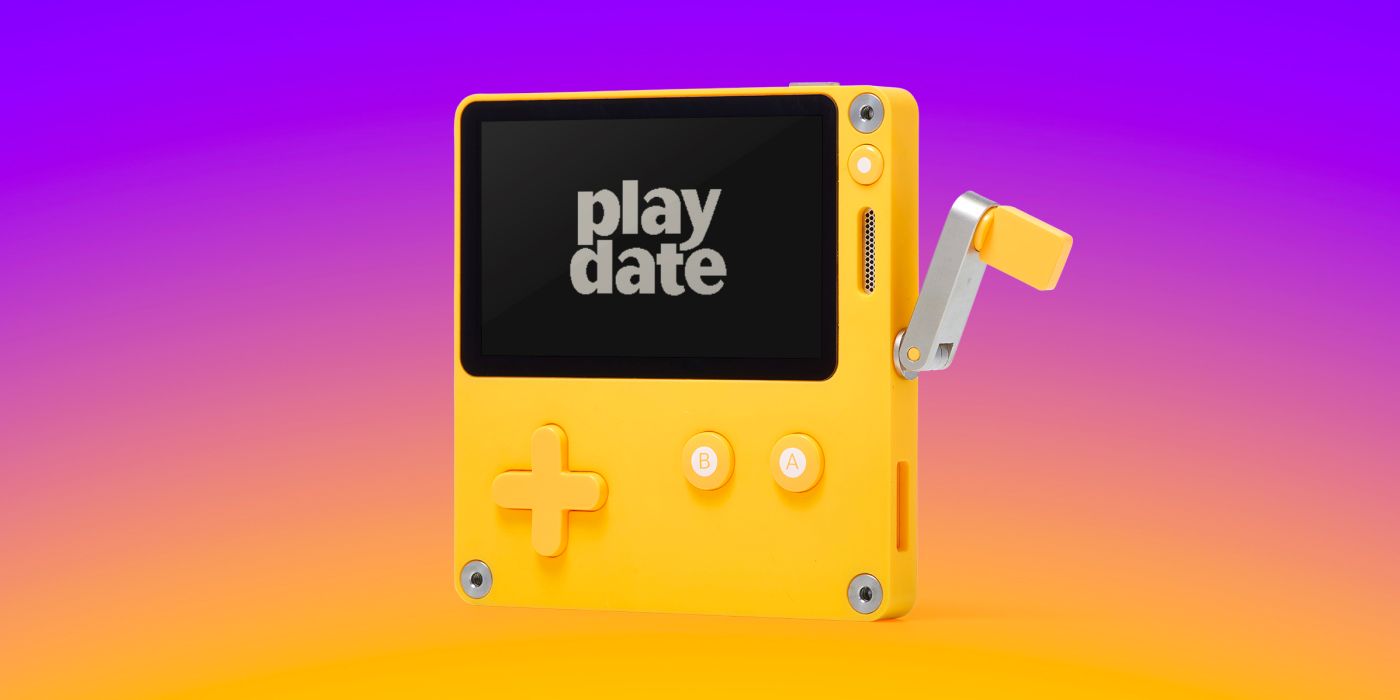The Playdate is a portable gaming device, developed by Panic, that was first announced back in 2019. While the console would fall off many people’s radars due to the chaos of the pandemic, it would finally make a return during E3 as part of Guerilla Collective’s showcase. Preorders finally became available last July, and over the past week, the company has begun to roll out the device.
The small handheld isn’t seeking to compete with the mainstream consoles, instead offering a unique indie gaming experience. For $179, you can order the device and have access to its first season of games, in which users will be provided with two titles each week for the first 12-weeks after purchase. Critics who have gotten thier hands on the device have a lot say about its design, library of games, and its potential future within the console market — so is it worth the money?
Critics Love the Playdate’s Look & Controls
When it comes to the overall aesthetic and feel of the device, it appears that critics are generally rather love-struck. TechCrunch’s Devin Coldewey was incredibly impressed by the console’s vibrant yellow color and small size, commenting that, “Panic and their partners at Teenage Engineering really nailed the look and the feel.” Wired’s Julian Chokkattu was similarly pleased, stating the Playdate was so “awfully pretty” that it felt as if it was “meant to sit on my desk as a nifty, retro clock.”
A handheld console’s controls are possibly its most important feature. While innovation is always interesting to behold, sticking to the basics of what makes games easily playable and fun is a complete must. The Playdate features a classic four-way directional pad and two game buttons, which have received positive reviews from those who have managed to get their hands on the system.
According to IGN’s Seth G. Macy, “motion is very fluid and there are no issues with ghosting even in fast-paced games like Whitewater Wipeout or Hyper Meteor.” Macy also says, “The best part here is the D-pad. It’s so clicky in every direction! It doesn’t have any mush or sloppiness. The A and B-buttons have a similarly satisfying tactile feel to them.”
Other Aspects of the Playdate’s Design Have Critics Divided
Although the Playdate has mostly traditional handheld controls, it also includes a completely unique feature in the form of a foldable mechanical crank. This adds another form of analog control, which flips out from its right-hand side and rotates to more precisely dial in actions for certain games and applications. The crank has received mixed reviews. While CNET’s Scott Stein found this element to be “well-made” and loved the feature so much that he “cranked it absent-mindedly” just for fun, Andrew Webster of The Verge questioned its build quality, calling it “slightly flimsy.”
The Playdate’s monochromatic screen has also received both positive and negative comments. While many love the retro-feel of the display’s rich black-and-white contrast, others are less impressed with its absence of a backlight and glossy covering. Katherine Castle from Rock Paper Shotgun sums up many people’s first impressions, commenting, “the Playdate’s display has the kind of contrast and deep, pin-sharp blacks that the Game Boy could only dream about, making it much easier on the eyes in everyday use. The screen is also super reflective, meaning it really catches the light regardless of whether you’re playing it in bright sunshine or cozied up under your duvet next to a bedside table lamp.”
Critics Aren’t Crazy About the Playdate’s Selection of Games
While a console’s overarching design is without doubt important, it’s all ultimately for nothing if the games it runs are a series of boring and uninspired time-wasters. As one might expect from a handheld system that doesn’t give users a choice in what games they can purchase, the Playdate’s library is a series of highs-and-lows. TechCrunch’s analysis of what gamers are likely to expect upon picking up the system summarizes the Playdate’s 24 games as “25% My Jam, 50% Cool But Not My Jam and 25% Eh.”
These comments may scare potential buyers from picking up the Playdate. However, it is important to note that many reviewers have stressed that the console is less about each specific game and should be judged by its overall experience. While not every game will be to an individual player’s liking, the novelty of seeing new games appear each week and not knowing what to expect is where the magic really happens. As Jordan Oloman of NME reflects, “some of them I absolutely loved and have come back to frequently, whereas others I played for ten minutes or half an hour and never touched again. It’s going to vary depending on your tastes, but the fact that there’s always something new around the corner steels you to any bum notes.”
Sadly, for those who haven’t already preordered, it will be a while before they can get their hands on the Playdate due to slow production times. However, once the console becomes more widely available ,it will be interesting to see if it can have widespread success and sustain interest within such a crowded and competitive market. So far, the Playdate’s issues seem small, particularly in comparison to the innovative and exciting features that the device offers.
Read Next
About The Author




